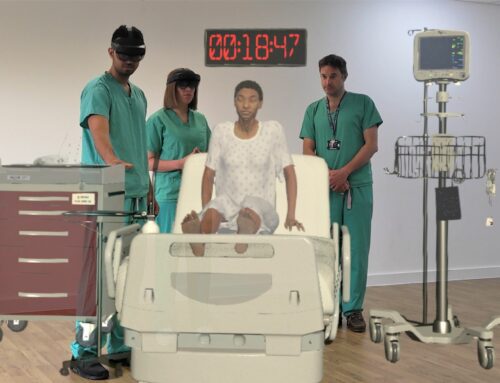By Dessiree Paoli, Senior Solution Manager at Interlace Health |
The pandemic transformed healthcare as we know it. The need to limit exposure and transmission of COVID-19 drove an explosion in the adoption of telehealth, with telehealth claims increasing more than 4,300% last year alone.
Overall, patients are happy with the virtual care they’ve received. Almost 82% said their experience with a virtual care visit was just as good as any in-person appointment they’d had; about 91% agreed that using telehealth made it easy to get the care they needed.
Now, patients are engaging more with healthcare overall. In one study, 77% of respondents said the pandemic moved them to pay more attention to their health. This is significant for many reasons, but it can make a huge difference when patients living with chronic conditions pay more attention to their care needs.
Telehealth can help vulnerable populations, like those living with chronic conditions, become healthier and stay healthier. For that to happen, however, those populations must have access to telehealth solutions.
The Need for Accessibility
To meet the demand for virtual care last year, health systems invested heavily in telehealth offerings. The industry quickly realized that telehealth was here to stay and then rose to meet the moment. But for the outcomes of that investment to be truly meaningful in helping people with chronic conditions live their healthiest lives, the technology has to be available to everyone and usable by everyone — not just the people with the easiest access to it.
Currently, several barriers stand in the way. Equal access to telehealth technology and an inadequate telecommunications infrastructure in certain areas and for certain people pose significant challenges to telehealth’s effectiveness. Beyond that, emergency authorization allowing Medicare to pay for telehealth services during the pandemic is set to expire along with the public health emergency declaration, eliminating coverage for Americans with chronic conditions who rely on the services.
The pandemic has brought disparities in healthcare to light in new ways, but telehealth has the power to help shrink those issues. To deliver virtual care to those dealing with chronic health conditions in a way that matters, there must be a renewed focus on making accessibility a priority and a concerted effort to open the digital front door in healthcare.
Virtual Solutions for Chronic Condition Management
To strengthen your foundation for digital healthcare and eventually engage those most in need of virtual care, your virtual toolbox should include these three elements:
1. Patient Portals
When COVID-19 forced patients to rely on virtual care more, engagement with patient portals became a necessity. Some people knew portals existed before the pandemic, but they only used them when necessary. Now, that’s changed. Patients portals enable patients to easily contact their providers for non-urgent questions, allow them to log in for virtual visits, and give them access to their records and current medical information. These platforms are major drivers of patient engagement and care management when made part of the telehealth experience.
2. Remote Patient Monitoring
Another technology with the potential to build engagement is remote patient monitoring tools. These devices electronically transmit patient data to physicians, bolstering telemedicine efforts by giving physicians access to more real-time patient information than they’ve ever had. Devices ranging from glucose monitors to blood pressure monitors help doctors manage patients’ chronic conditions from afar with real-time data.
3. Wellness Apps
In a world where everything is done from the screen of our phones and devices, apps are an increasingly necessary part of a strong telehealth offering. The mobile health app market is expected to be valued at $149.3 billion by 2028, and both patients and providers favor their use. These apps can help people with everything from sleep tracking to mental health support to the management of chronic conditions. Like remote patient monitoring devices, they can track, collect, and share data with physicians, helping patients with chronic conditions stay connected with their care providers.
Telehealth opened new doors in healthcare over the past year — especially for patients with chronic conditions. As this growth continues, the healthcare industry will need to commit to strengthening virtual offerings, increasing access to telehealth services, and using the technology to its fullest potential. If they do, chronic condition management and healthcare as a whole can drastically improve.
 About the Author
About the Author
Dessiree Paoli is a senior solution manager at Interlace Health, a company that transforms workflows by providing clinicians and patients with digital healthcare solutions. She graduated from Oklahoma State University with a Bachelor of Journalism/Advertising and obtained an MBA from Regis University. She has more than 19 years of experience in driving strategic marketing initiatives, leading teams, and developing integrated campaigns, and she has worked in healthcare for more than 13 years.












